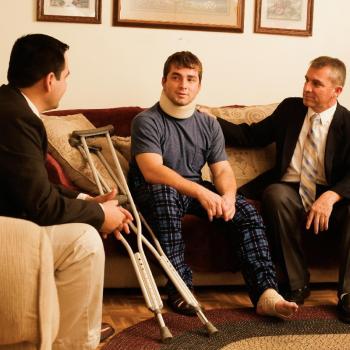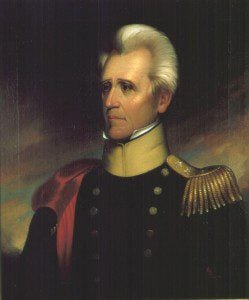In her post “Dan Brown’s ‘Inferno’: An Eternal Return” earlier this week, my colleague Susanna Morrill observed that Dan Brown has a knack for telling familiar stories in a language of standard tropes. As Susanna showed, Brown’s work taps into a variety of American anxieties, and it reflects a number of movements in American thought. Susanna’s observations approached Brown with a wide-angle lens, and she ably illuminated the ways in which Brown’s latest whodunit novel featuring the intrepid “religious symbologist” Robert Langdon embodies many American hopes and fears about religion, science, and, at bottom, authority. Today I want to narrow the focus to the two key issues that most occupy Brown in the novels that I’ve read (Angels and Demons [2000], The Da Vinci Code [2003], and now Inferno [2013]): Roman Catholicism and female sexuality. Because while, as Susanna contends, Brown does not resolve all questions for his readers, he is crystal clear on these two subjects. In keeping with countless American representations of suspect religious groups, Brown both opposes the institution of the Catholic Church at every turn—frequently on the grounds of the hierarchy’s excessive control over members’ sexuality—and at the same time puts clear limits on women’s sexuality. [1]
Brown’s anti-Catholicism is obvious to many readers, and as Susanna observed is part of a much longer tradition of opposition to the Roman Catholic Church in American culture. His condemnation of what he perceives to be the anti-intellectual, hypocritical, and corrupt hierarchy taps into popular themes that can be traced back in American popular culture as far as the earliest English settlers, who brought their anti-papal sentiments and stories with them when they sought to build their City upon a Hill on North American soil. In the early 19th century, Indian captivity narratives merged with nativist anti-Catholic sentiment in a flowering of popular Gothic literature designed to warn Protestant Americans of (and titillate them with) the dangers that the growing Catholic community posed not just to their souls, but also to the bodies of their wives and daughters. Popular “memoirs” of the supposed captivities of innocent young women like Boston’s Rebecca Reed and Montreal’s Maria Monk warned that once young women were ensnared by nuns into entering a convent, whether for an education or a religious calling, they would not be allowed to leave. Further, the most sordid tales—like Monk’s—assured readers that the unnatural celibacy called for by Catholic religious was merely a façade, and that behind the closed doors of the convent, the confessional, and the cathedral, priests were having their way with the women under their power.
And so it is in Brown’s stories. In Angels and Demons, his villain is a young priest who takes his Church’s mandates on priestly celibacy so seriously that he goes mad and seeks to blow up the Vatican when he discovers that the pope fathered him. Brown’s pope achieved fatherhood via in vitro fertilization, which allowed the then-priest to maintain his vow of celibacy—Brown doesn’t address how the supposedly devoutly adherent priest justified ignoring his Church’s proscription of IVF. In The Da Vinci Code, the Church is so zealously and oppressively patriarchal that, for over 2000 years, it has denied that Jesus himself was married and fathered children in order to suppress and control women. I’m not denying that the Catholic Church—like the vast majority of human institutions—is historically patriarchal and oppressive toward women, but Brown’s claims that femininity was forced out of the realm of the divine hardly ring true when the widespread veneration of the Virgin Mary and various female saints—which Brown ignored—is taken into consideration. And now, in Inferno, Brown targets two institutions by name as blameworthy for human overpopulation: the Catholic Church, which deploys an army of missionaries to preach against contraception among exploding third world populations, and the World Health Organization, which fails to counteract the Church’s teaching (21).
Such stories about unnatural or unhealthful sexual practices and the attendant abuse and oppression of women—whether in the 19th century or the 21st—not only function to warn people away from the dangers of the Catholic (or Mormon… or Muslim…) religion, but also serve as a cautionary tale about uncontrolled female sexuality. Women in these stories are, with rare exceptions, foolish victims of powerful and conniving male religious leaders. Their parents, brothers, and even husbands fail to protect them from their own physical, intellectual, and spiritual weakness. The only decisions they make are those that tend toward their own destruction, in the form of sexual depravity and exploitation or, more recently, extreme and debilitating repression. [2]
While Brown in many ways champions freer sexuality and the embrace of the feminine, women’s sexuality is in fact strictly limited in these stories. Angels and Demons turns on the young priest’s fury at his father the pope, and he seeks to destroy the institution with which his father’s office is synonymous. His conveniently dead mother barely figures in the story beyond having birthed him. In The Da Vinci Code, Jesus’s wife must remain secret. Her existence is buried in history and shrouded in mystery, much as her physical remains are entombed out of sight and marked by symbols that only a very few—including, as Susanna noted, Brown’s Romantic hero—can interpret. And in Inferno, Brown goes so far as to strip his female characters of the traditional markers of femininity. The brilliant Sienna Brooks is so neurotic—19th-century readers would perhaps diagnose her with “hysteria”—that she loses her hair, which is of course considered by some religious communities to be such a potent physical embodiment of female sexuality that female adherents are required to cover their hair in the presence of everyone but their husbands. Brown’s powerful Dr. Elizabeth Sinskey, head of the World Health Organization, is infertile, and spends significant time in the novel reflecting on and grieving over her inability to have children. Robert Langdon, too, has no children, but Brown doesn’t show him worrying about that fact. Nor does Brown particularly dwell on whether any of his male characters are bald. He doesn’t feel the need to delve into his male characters’ sexuality because, unlike the women in his novels, the men aren’t defined by their sex or their sexual behaviors.
At the end of Inferno, Brown reminds readers of Dante’s reservation of the darkest places in hell for those who attempt to maintain their neutrality in times of crisis. On at least two points, Brown himself is anything but neutral. Like so many before him, he uses the medium of popular culture to warn his American audience of the political, social, and spiritual menace of a repressive authoritarian religious hierarchy. He also demonstrates, time and again, the dangers of allowing anyone to take control of female bodies from the all-American hero with whom such control properly rests.
[1] Like Susanna, I’ll leave it to better qualified reviewers to discuss the problems with Brown’s writing. I will say, however, that although I’m no expert on Dante, I strongly recommend that readers not trust Brown’s historical and literary analysis of the Italian poet and his work. For a brief, readable tutorial, try Dante: A Brief History by Peter S. Hawkins, Professor of Religion and Literature at Yale Divinity School.
[2] In the case of another religion routinely derided in American culture—Mormonism—Terryl L. Givens has observed that over the last half-century, as sexual mores have changed in American culture, a community that was once demonized for its supposedly lascivious sexual practices is now regularly condemned as damagingly sexually repressive. See, for example, “How Mormons Became American,” Religion & Politics, November 14, 2012.











